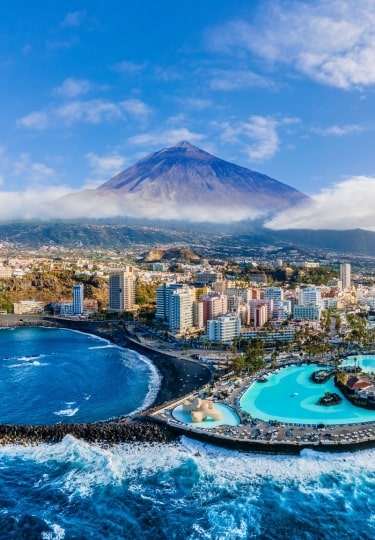Spain’s influence and culture are wide-reaching in Europe, extending far beyond the shores of the Iberian peninsula. The Mediterranean islands of the Balearics are famed for their ancient history, rugged mountains, and glamorous clientele.
The volcanic Canary Islands, off the coast of Morocco, are starkly beautiful, basking in year-round sunshine, cultivating coffee and bananas, and the streets of their elegant old towns lined with grand old mansions.
Distances within each island chain are short, making it easy to take in several places during the same trip. Even then, you’ll marvel at the individual characters of each island, from chic Mallorca to the bohemian party island of Ibiza.
In the Canaries, the lush valleys and ravines of Gran Canaria contrast with Lanzarote’s rolling dunes and fiery beauty. Discover the beauty of these Spanish islands, which are all enchanting and equally rewarding to explore.
Tenerife
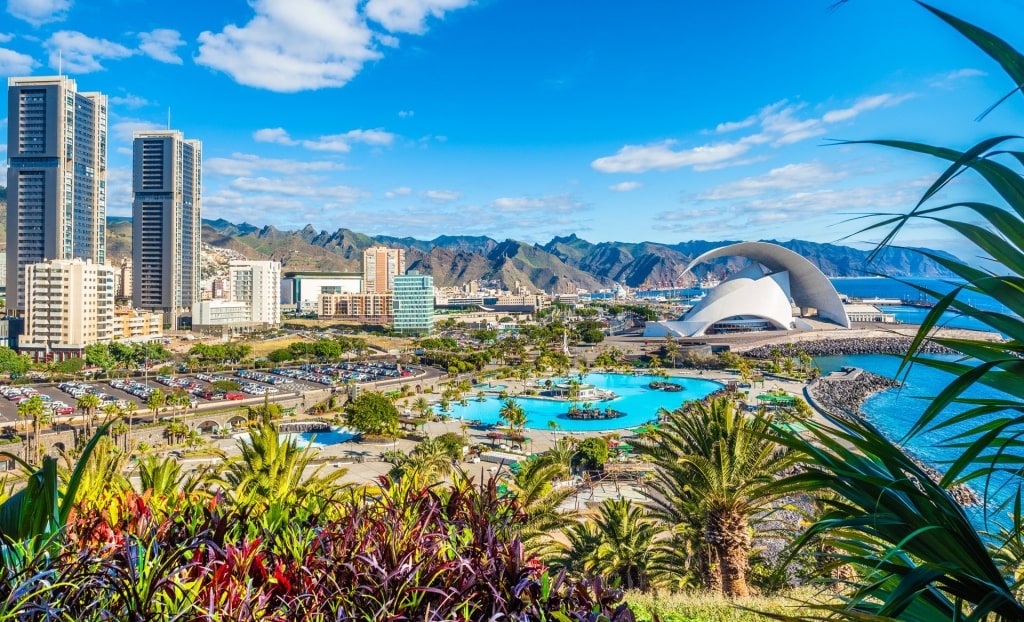
Santa Cruz de Tenerife, Canary Islands
Tenerife is the largest of the Canary Islands, a volcanic archipelago scattered off the southwest coast of Morocco, closer to Africa than Spain in terms of climate, although decidedly Spanish in culture.
The island is dominated by Spain’s highest mountain, Pico de Teide, rising over 12,000 feet. It’s an impressive sight in winter when its cone-shaped peak is covered with snow, even though spidery green banana palms crawl over the lower slopes.
Santa Cruz, the capital, is a Spanish city in miniature rather than a vacation resort. Its palm-lined boulevards and wide Plaza de Espana are lined with shops and restaurants, as well as fine architecture. Check out the colorful fruit and flower market, Mercado de Nuestro Señora de Africa, and don’t miss out on visiting the museums.
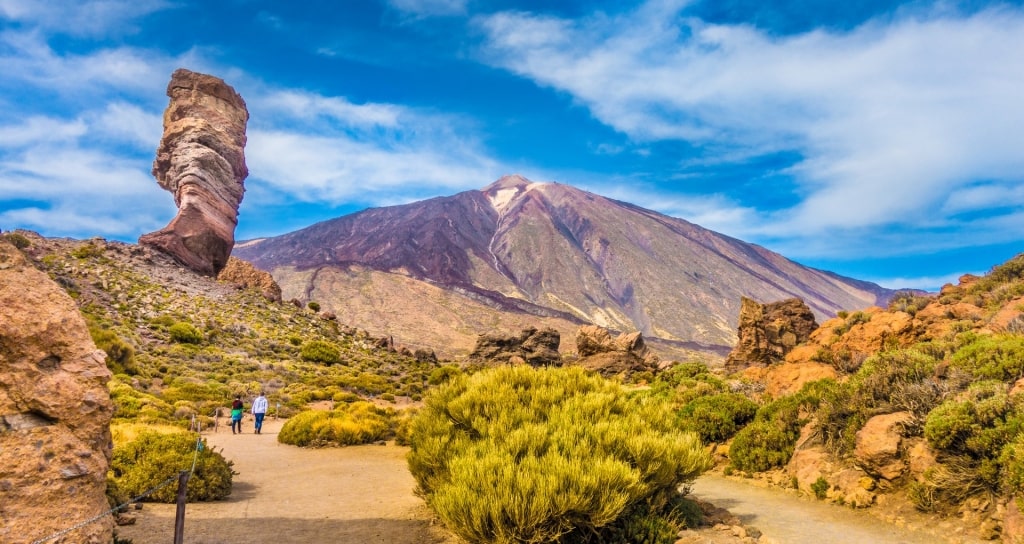
Teide National Park in Tenerife, Canary Islands
One of the best things to do in Tenerife is to head for the dizzying heights of Teide, boarding a teleférico (aerial tram) up to the top, where you can throw a snowball with the dark blue of the Atlantic below as a backdrop and marvel at the tumbled black lava of the spiky, lunar landscape.
Read: Best Beaches in Tenerife
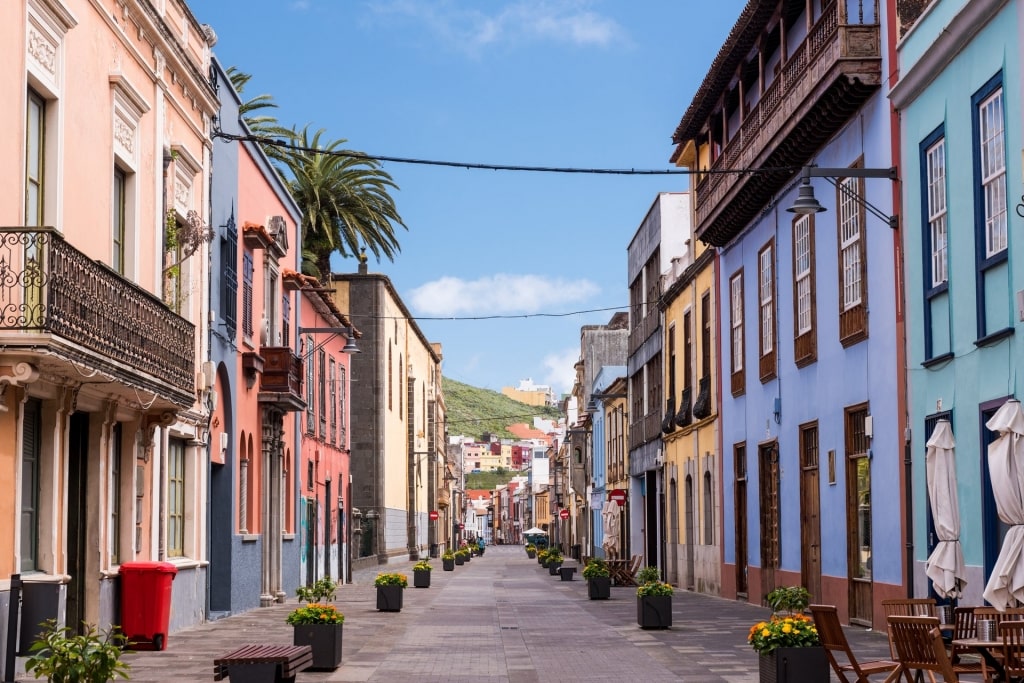
La Laguna in Tenerife, Canary Islands
Alternatively, take a trip to nearby La Laguna, widely regarded as the prettiest town on this European island. It’s so beautifully preserved that it’s been designated a UNESCO World Heritage Site. The grid system laid out between the 15th to 17th centuries was a model for many cities in the Americas and the cobbled streets are lined with mansions in dusky pink, ochre, and sky blue.
If you’re traveling Europe with children, a good option for a day trip is Loro Parque, near Puerto de la Cruz. This sprawling zoo keeps chimpanzees, gorillas, and lions and also has the world’s most diverse collection of parrots. Combine a visit with a drive through the gorgeous Orotava Valley, rich with banana and pineapple plantations.
Or if you just want to cool off, Puerto de la Cruz itself has an enormous saltwater lido, Lago Martianez, on its waterfront with a string of curved pools, fountains, waterfront restaurants, and a sculpture park.
Lanzarote
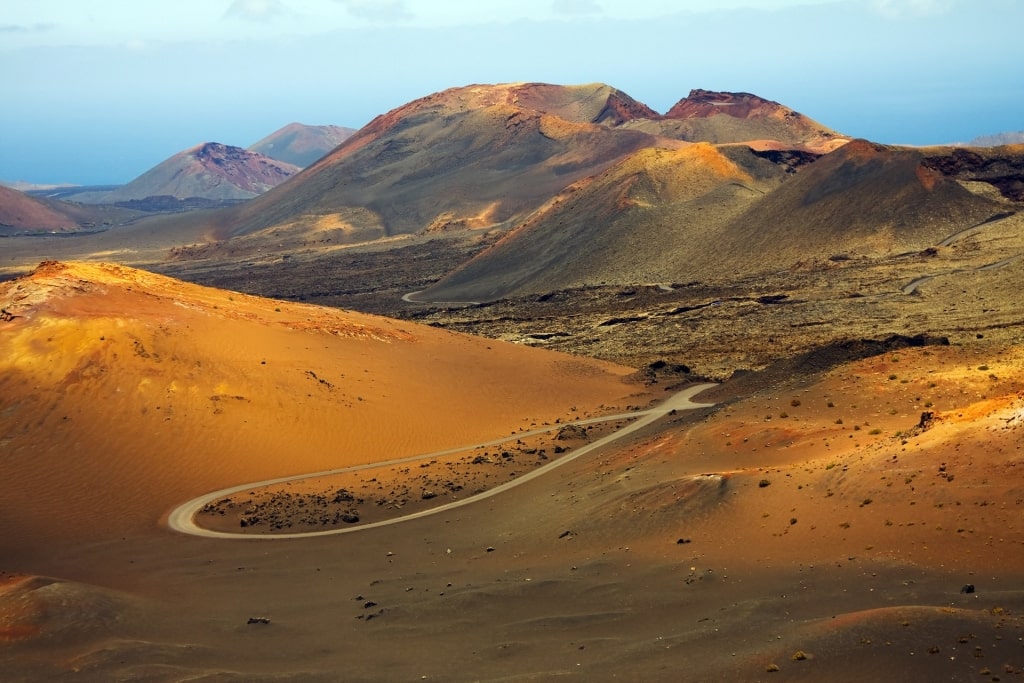
Timanfaya National Park in Lanzarote, Canary Islands
Volcanic Lanzarote is like nowhere else on earth. The landscape is starkly beautiful, bleak, and windswept, with tiny whitewashed farmhouses nestled in the middle of boulder-strewn lava fields and great clusters of prickly pear cactus colonizing the roadsides.
While the island has a rich architectural scene, the biggest natural attraction is Timanfaya, the national park at the island’s center. Here, ochre sand dunes ripple with changing color as the sun sinks and camel trains carrying visitors serve as a reminder that the Sahara is not far away.
At the top of the mountain, park guides demonstrate the massive geothermal energy simmering inches below the surface by stuffing bits of brushwood into a hole, only to see the whole lot explode into flames seconds later.
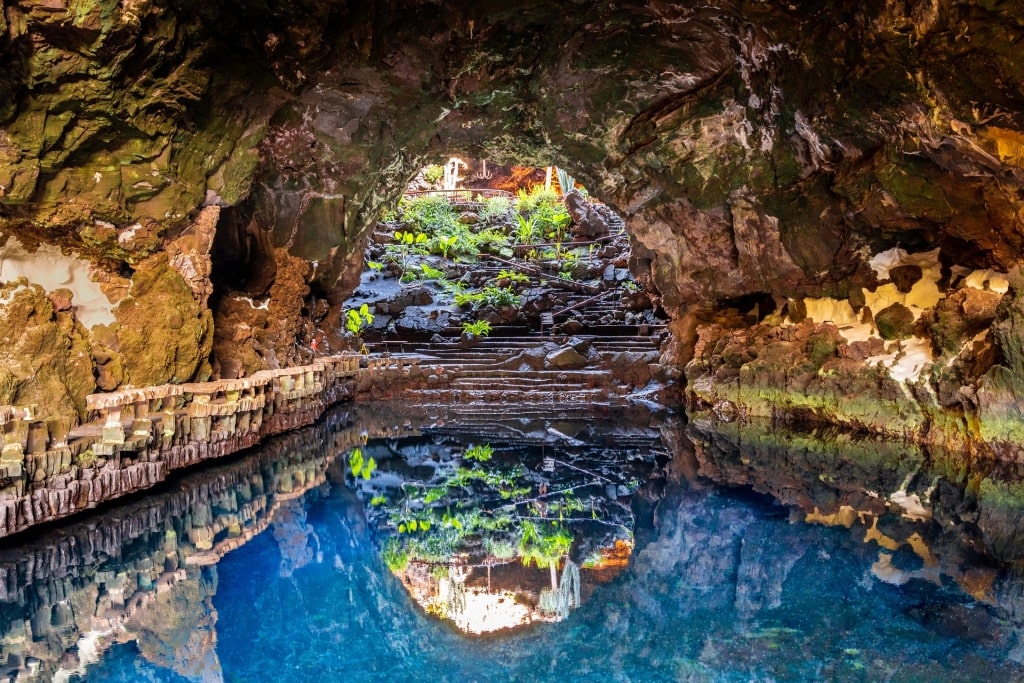
Jameos del Agua in Lanzarote, Canary Islands
Another volcanic phenomenon is the extraordinary Jameos del Agua, a deep volcanic tube that leads to a clear, azure underground lake in which a species of rare, blind crab lives. Jameos del Agua is one of local architect Cesar Manrique’s most famous projects, and visiting is one of the best things to do in the Canary Islands.
Working with the colors and textures of the island, Manrique built a white pool, restaurant, and terraced bars into the rock around the entrance to the cave to create a natural auditorium where concerts for up to 600 take place in a dreamy setting with magnificent acoustics.
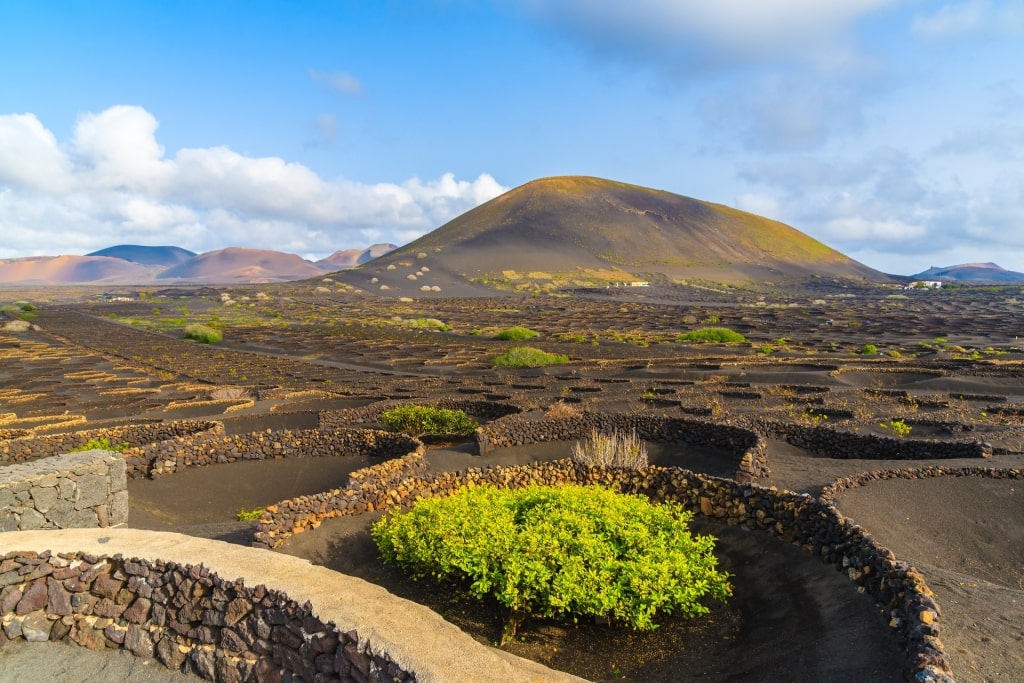
La Geria Valley in Lanzarote, Canary Islands
Lanzarote’s black soil is surprisingly fertile, although the island’s agricultural techniques are unusual. One of the best things to do in Lanzarote is to visit La Geria Valley, the wine-growing area, to see how grapes are harvested in little hollows with a low, stone-built enclosure protecting each vine from the wind.
A wine tasting here will typically include the island’s favorite snack: tiny boiled potatoes dipped in tangy tomato and pimento sauce or a green sauce of bell pepper and cilantro.
If you’re simply looking to relax on a beautiful Mediterranean beach, head to Playa del Carmen, a four-mile stretch of sand along the south coast that includes a promenade packed with bars, cafes, and watersports rental facilities.
The sand here is deep gold unlike the island’s signature black sand beaches, where it can get impossibly hot during the height of summer.
Gran Canaria
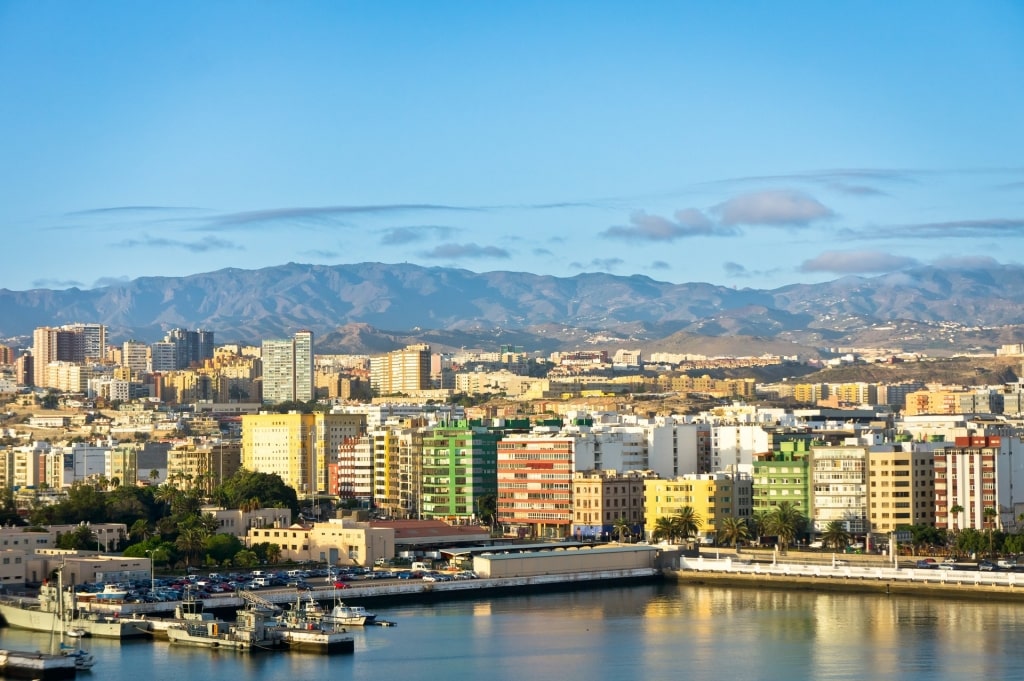
Las Palmas in Gran Canaria, Canary Islands
Gran Canaria is green and arid, all at the same time. The island enjoys a lively cultural scene, especially at its capital, Las Palmas, which is the best place in the archipelago for shopping, restaurants, and long, lazy lunches in pretty squares. You’ll find big-name designers here, as well as Spanish labels and quirky little boutiques.
Read: Best Shopping Cities in Europe
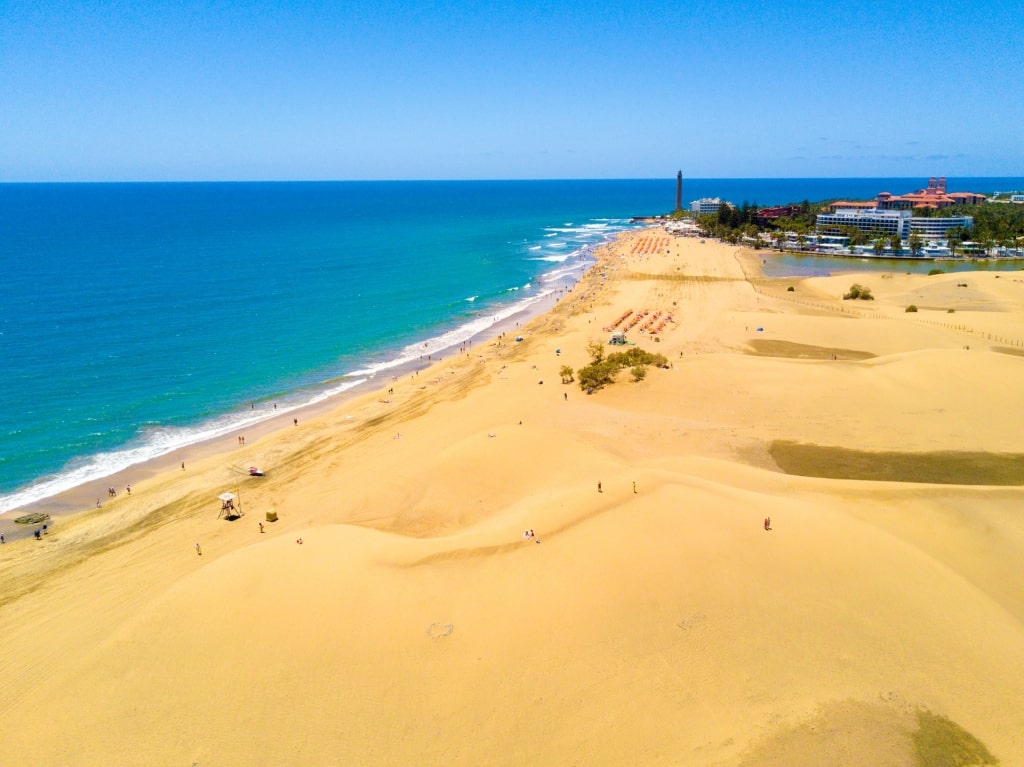
Maspalomas Beach in Gran Canaria, Canary Islands
For beach life, you can’t beat Maspalomas in the island’s south, where the wind-sculpted dunes give way to long, golden stretches of sand. As one of the most beautiful places in Spain, the surfing here is also superb and just watching the acrobatics of the kite surfers is mesmerizing.
The interior of the island offers plenty to see, as well. Take a tour up through towering mountains and deep, green ravines to Tejeda, an enchanting hill village nestled on the eastern edge of a vast caldera surrounded by pine forest and almond groves. The village is dominated by a pretty whitewashed church and its narrow streets are lined with houses sporting traditional Canarian wooden balconies.
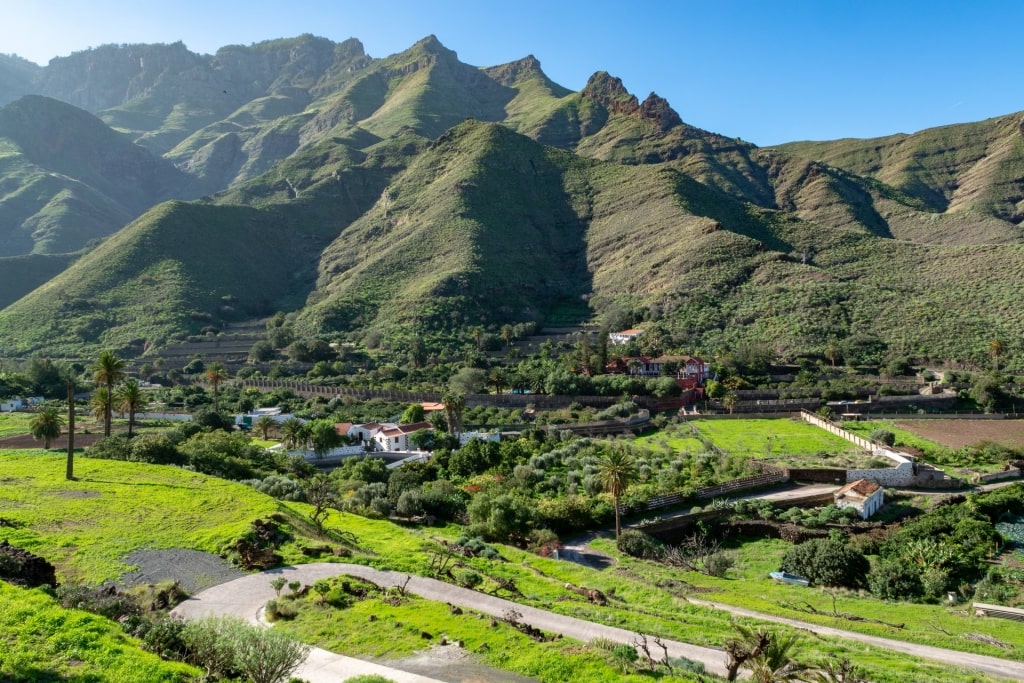
Agaete Valley in Gran Canaria, Canary Islands
Or explore the coastal village of Agaete in the north, where sheer cliffs drop straight into the sea. Oranges, mangos, and coffee are grown in the verdant Agaete Valley, where local farms offer tastings of the island’s produce.
In the Doramas Natural Park, also in the north of the island, discover the great outdoors on a hike through narrow, stream-fed ravines, where a large number of endemic trees and plants thrive. Several trails end in the ancient, whitewashed village of Firgas, which spills over a hilltop and where you can reward your efforts with tapas, a cold beer, and sweeping views of the coast.
Read: Best Places to Hike in Spain
Mallorca
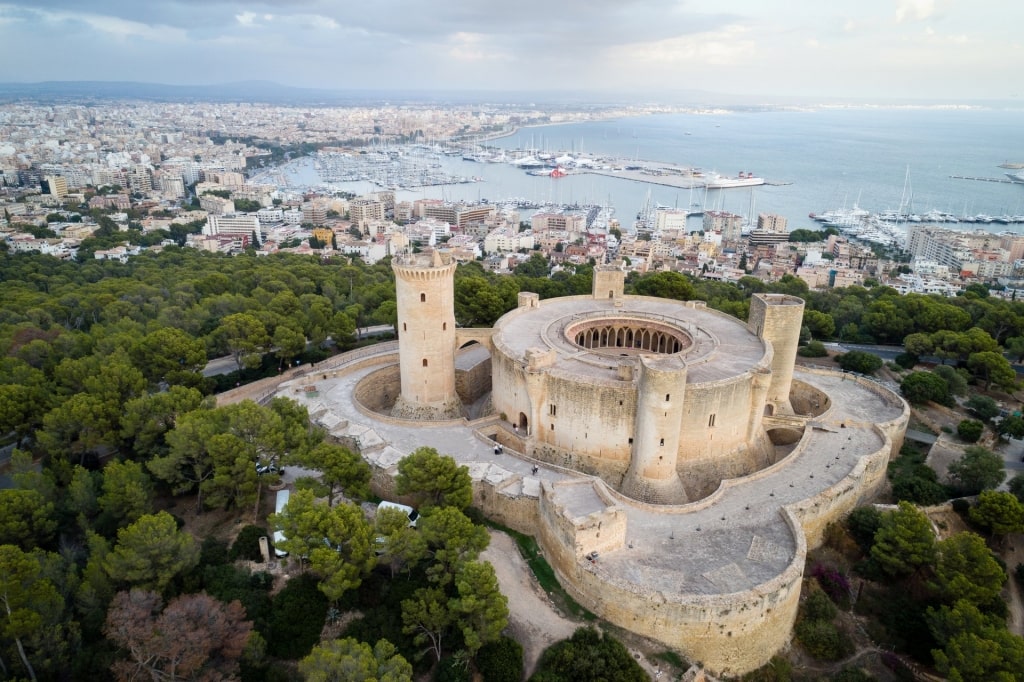
Bellver Castle, Mallorca
The administrative capital of the sun-drenched Balearic Islands off the eastern coast of Spain, Palma de Mallorca sweeps elegantly around the curve of a vast natural bay. The landscape is dominated by the hulk of Bellver Castle on the hilltop and the majestic Catalan-Gothic cathedral, La Seu, which presides over the eastern end of the bay.
Palm trees line the waterfront, while thousands of yachts bob in the sparkling water. It’s easy to see how Mallorca is a favorite vacation destination of the Spanish royal family.
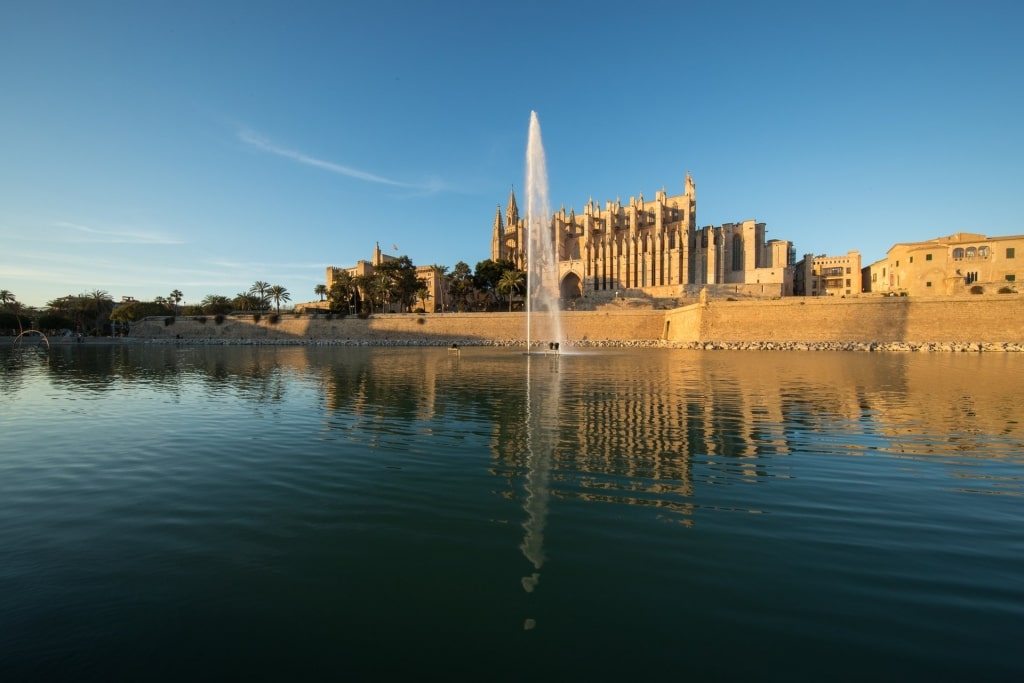
La Seu Cathedral, Mallorca
Most of the city’s sights are clustered in the medieval quarter around the cathedral, a place of worship that dates back to the 13th century, which took 400 years to complete. This spectacular Spain landmark exudes a dramatic structure with towering flying buttresses and soaring pinnacles; its exterior is beautifully floodlit at night. Inside, you can admire the largest rose window in Europe and the wrought-iron altar canopy in the modernista style of Barcelona’s most famous son, Antoni Gaudi.
Mallorca was under Arab rule in the early Middle Ages; in fact, the cathedral stands on the site of a former mosque. The Palau d’Almudaina next door was an Islamic fortress with many original features and a lush, Arabic-style garden, S’Hort del Rei, set around splashing fountains and reflecting pools.
After a tour, wander through the tangle of narrow streets of the medieval quarter, where the cool shade of basement tapas bars beckons.
Read: Best Medieval Castles in Europe
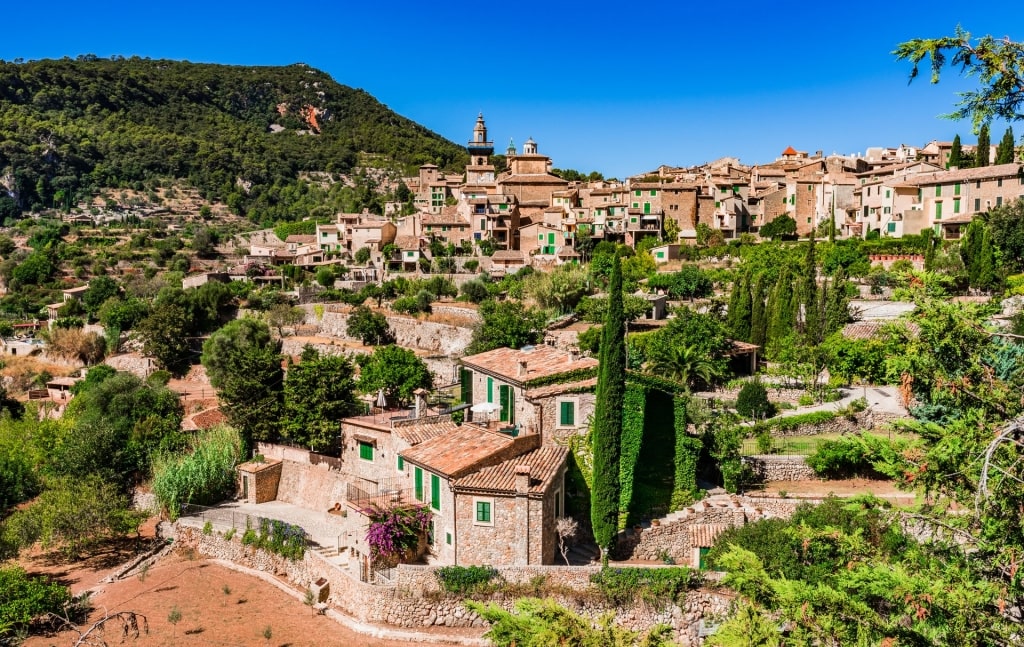
Valldemossa, Mallorca
Palma is an easy base from which to explore the island. Stroll through olive and almond groves up into the hills on a wooden vintage train to Sóller, a wealthy village in the Serra de Tramuntana mountain range that is linked by a cable car to its extremely glamorous harbor area, Port de Sóller.
Make time for fresh seafood in one of the waterfront restaurants. Or visit Valldemossa, a stately town on the western flanks of the mountain range dominated by a grand, 14th-century monastery, Real Cartuja de Valldemossa. Composer Frédéric Chopin and his lover, George Sand, lived here in the 19th century, and some of Chopin’s pianos are on display today.
You can learn more about Mallorca’s history at La Granja de Esporles, a 17th-century mansion in the mountains outside Palma that is surrounded by exquisite ornamental gardens.
You’ll see displays of traditional crafts, from weaving to olive oil pressing, and have a chance to taste typical island cuisine including sobrassada (a spicy sausage), fig bread, buñuelos (sugary, fluffy fried dough balls), and wine.
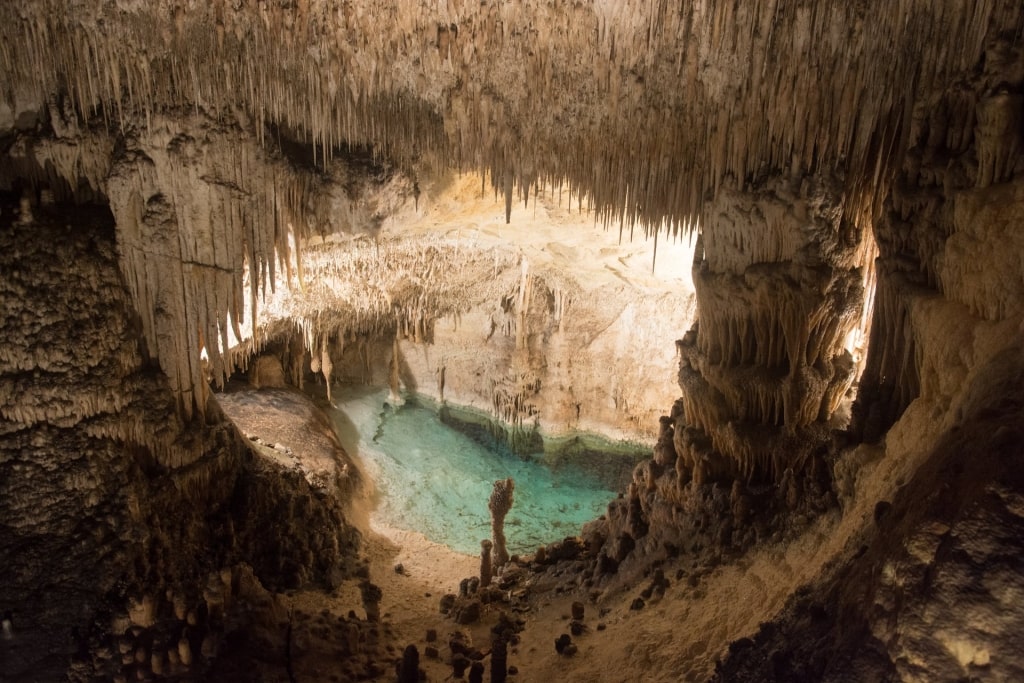
Caves of Drach, Mallorca
The island has plenty of natural attractions, too, from kayak trips around the craggy Malgrats Islands, a scenic nature reserve to the west of Palma, to a trip in a rowboat across a large underground lake at the Caves of Drach, where the roof of the caves drips with slender stalactites.
Read: Best Beaches in Mallorca
Ibiza
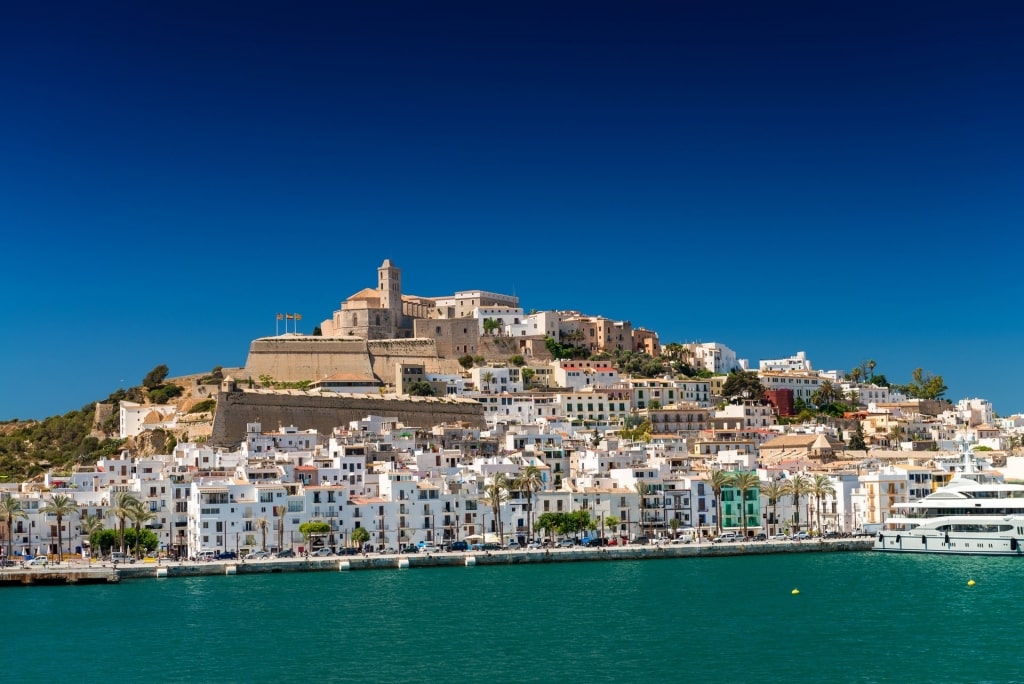
Ibiza
Ibiza, also known as the White Island, has many faces. There’s its well-deserved reputation as a party island with world-famous clubs and big-name DJs. It used to be a hippie hangout in the 1960s and ‘70s.
The island’s current evolution is a sanctuary for spiritual and wellness retreats that attracts global devotees with its supposed magnetic and mystical powers. Needless to say, the combination of all three Ibizas draws a wide celebrity following and the island is imbued with an aura of laid-back glamor.
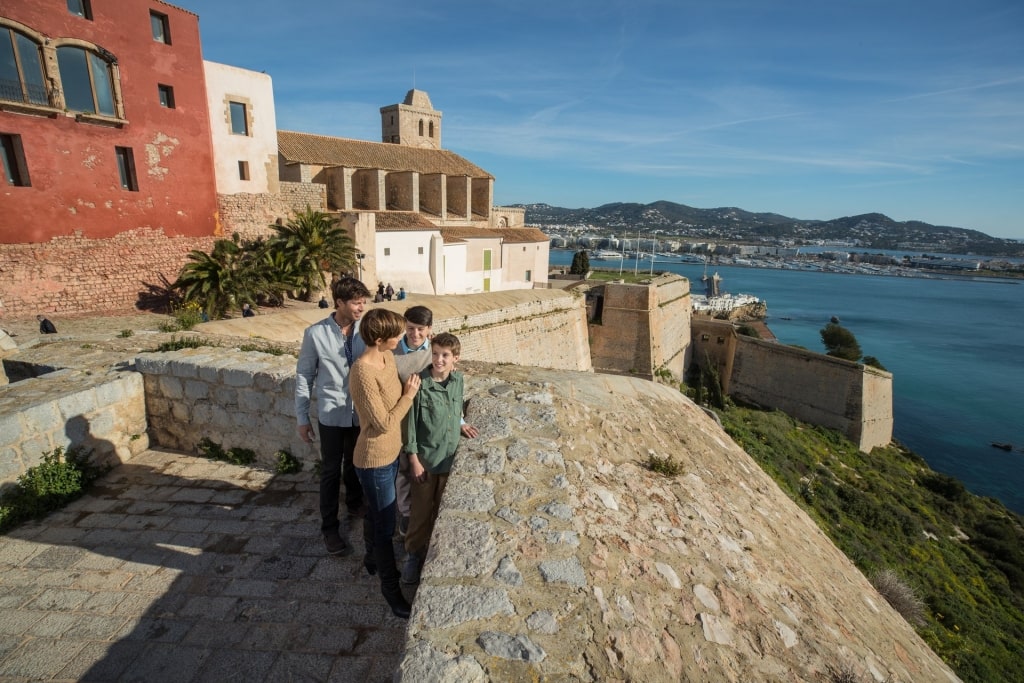
Dalt Vila, Ibiza
Eivissa, the capital, is just gorgeous, with the oldest district, Dalt Vila, perched on top of a hill gazing down on the port and encircled by 16th-century bastions. You’ll explore the ancient palaces, convents, and churches on foot here, as the cobbled alleys are too narrow for traffic.
The Museu Arqueològic de Dalt Vila puts the island’s history in perspective, from prehistory to the Phoenician and Punic occupations. Meanwhile, the area of Sa Marina at the base of the hill is crammed with boho fashion stores, market stalls, and bars.
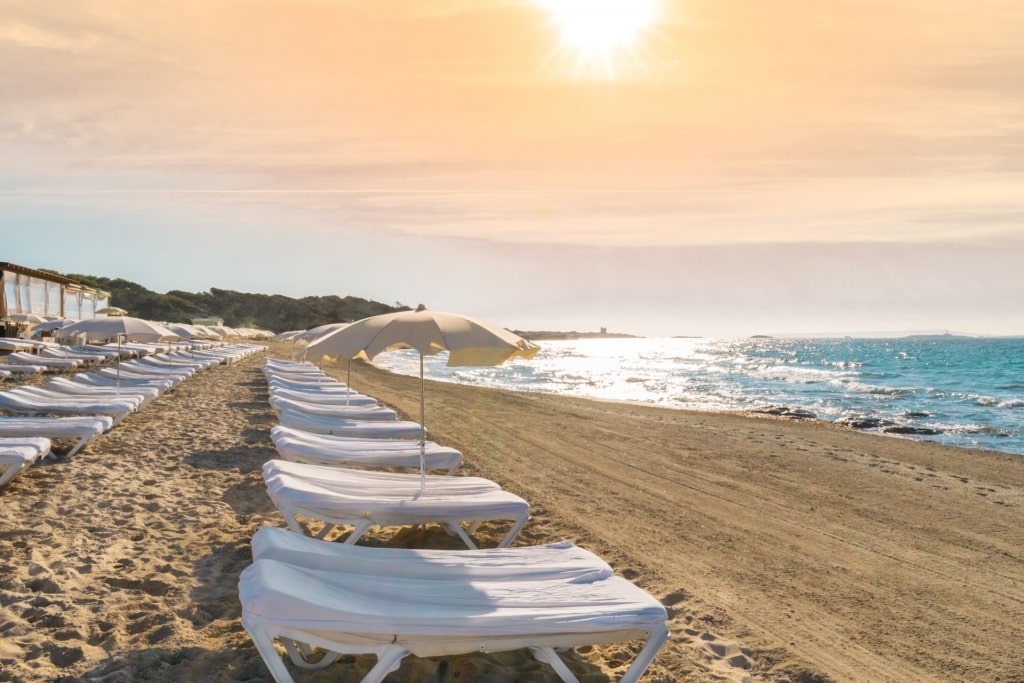
Ses Salines, Ibiza
Ibiza is ringed with beaches and rocky coves, but a great spot for people-watching is the long sweep of Ses Salines, an area in front of the salt flats where the beach itself is backed by low dunes and pine trees.
Visiting the chiringuitos, or beach bars, lining the sand is one of the best things to do in Ibiza. Some are rustic while others offer high-octane glamor, pumping out Balearic beats as the occupants of the megayachts venture ashore for lunchtime cocktails in the sunshine.
There’s another taste of Ibiza’s legendary vibe at Sant Antoni, a busy resort town on the west coast. Rock up here before sunset and take up residence in the famous Café del Mar, the Mambo Café, or the Savannah Beach Club and join thousands of others in tapas, cocktails, and chill-out tunes while enjoying the fiery sunset.
Cíes Islands
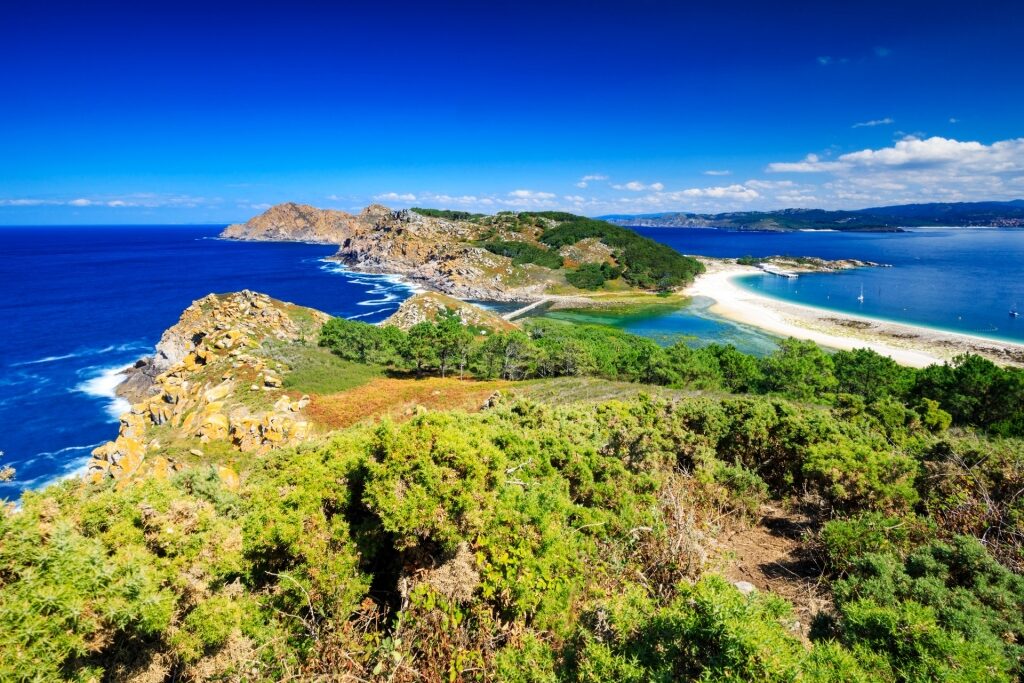
Cíes Islands, Vigo
Some 45 minutes by boat from the port of Vigo on Spain’s northwest coast, the three granite Cíes Islands are the star attraction of the Parque Nacional de las Islas Atlánticas de Galicia. Uninhabited and vehicle-free, these green, wooded islands are fringed by long, sandy beaches and sheer cliffs that are home to thousands of seabirds that plunge into the crystalline water.
Come here for a beach day on the dazzling white sands of Praia des Rodas, which links the two main islands, Monteagudo and Montefaro. Or pack your hiking boots and head for the trails, some leading to spectacular viewpoints with the scent of pine in the air. Bring a picnic, as there are no stores, or head to one of the rustic restaurants for seafood with sea views.
Read: Best Places for Cycling in Spain
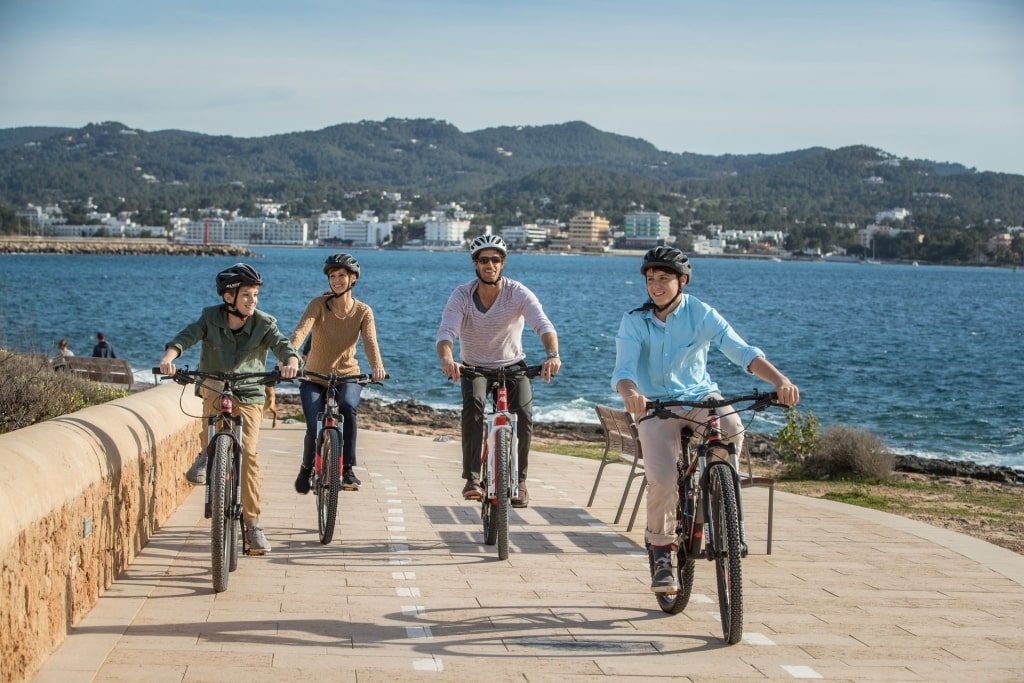
Ibiza
Ready to embark on a vacation to these unforgettable Spanish islands? Browse cruises to Spain on our website and start planning your next adventure.
